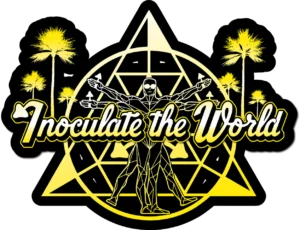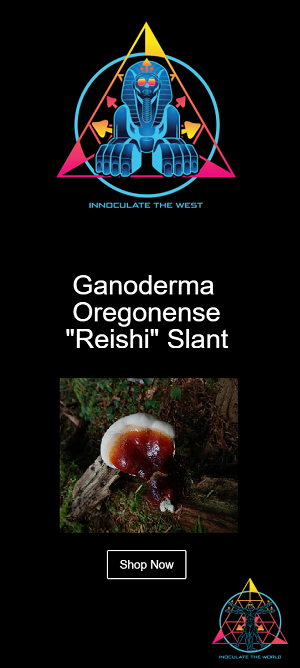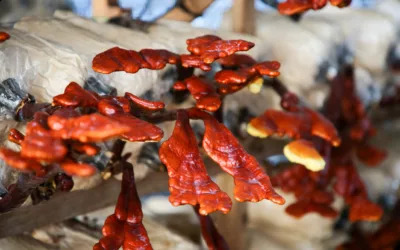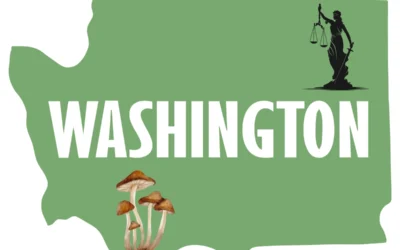
OVERVIEW:
Psilocybe cubensis is a species of psychedelic mushroom whose principal active compounds are psilocybin and psilocin. Commonly called magic mushrooms, “little flowers”, or gold caps, it belongs to the Hymenogastraceae family of fungi and was previously known as Stropharia cubensis. It is the most well known psilocybin mushroom on earth, mainly due to its wide distribution and ease of cultivation and the availability of its mushroom spores (1). In Albert Hoffmans’ “Plants Of The Gods”, we learn of the earliest isolation of psilocybin. The text notes that in 1957 psilocybin was first isolated from the Psilocybe mexicana mushroom (2). More than 182 species of fungi are known to contain the tryptamine alkaloids psilocin and/or psilocybin. They are known as Agaricales, and include the genera Psilocybe (117 species), Gymnopilus (13 species), Panaeolus (7 species), Copelandia (12 species), Hypholoma (6 species), Pluteus (6 species), Inocybe (6 species), Conocybe (4 species), and Agrocybe, Galerina and Mycena (one each). (3).
PSYCHOTROPIC ANALYSIS:
The psychotropic effects are given by the most important active principles, psilocybin (O-phosphoryl-4-hydroxy-N,N-dimethyltryptamine) and psilocin (4-hydroxy-N,N-dimethyltryptamine). They are indole alkaloids derived from tryptamine with potent agonist activity at 5-HT receptors and were identified in 1958 by the chemist Albert Hofmann (Kirsten & Bernardi, 2010). (4).
WORKED ISOLATIONS:
When you discover appealing cubensis wild mushrooms, you can take this into the lab environment and “domesticate” (5) the species. Through rigorous selective isolations, a stable sample can be obtained. If unique enough, many folk will name the variety, allowing for its distinction against its cubensis counterparts. Spores are the ultimate test for an isolations stability. Once the psilocybin spores collected off an isolated fruit produce growth in congruence to its mother isolation, it can then be considered a “stable isolation”. There is still little understood about the genetic changes that occur in “isolated cubensis varieties”. With Minion sequencers, and other state of the art tools available to the home mycologist, we will continue to work to understand this genetic transition, with hopes of having unsolved mysteries answered soon.
The psychotropic effects are given by the most important active principles, psilocybin (O-phosphoryl-4-hydroxy-N,N-dimethyltryptamine) and psilocin (4-hydroxy-N,N-dimethyltryptamine). They are indole alkaloids derived from tryptamine with potent agonist activity at 5-HT receptors and were identified in 1958 by the chemist Albert Hofmann (Kirsten & Bernardi, 2010). (4).
FLORIDA CUBENSIS:
The great state of Florida offers some of the best wild Psilocybe Cubensis hunting on the planet. For generations, farmers have worked to keep interested minds off their lands and away from their  cattle. On dung-rich cattle fields, the cattle, cattle egrets, and the psilocybe cubensis work together forming a symbiotic relationship which allows for a great abundance of the active (6) mushrooms. Psilocybe cubensis spores are present on grasses which cattle graze. Having low acidity in their digestive tracts, the cattles stomach allows the spores to pass through and be left to germinate in the dung patties they are secreted into.
cattle. On dung-rich cattle fields, the cattle, cattle egrets, and the psilocybe cubensis work together forming a symbiotic relationship which allows for a great abundance of the active (6) mushrooms. Psilocybe cubensis spores are present on grasses which cattle graze. Having low acidity in their digestive tracts, the cattles stomach allows the spores to pass through and be left to germinate in the dung patties they are secreted into.
Cattle egrets stay close to the cattle, eating bugs and other small organisms present on the cows backs. Additionally, the egrets enjoy eating the cubensis mushrooms and the dung patties they grow from. As the cattle egrets travel across the state, it is possible that these spores are spread through remains on their feet and beaks, as well as their feces. Through this, we can begin to speculate that the same mother genetics are being spread across the entire state. There is still much to speculate on this subject.
- Mushroomobservor.org
- “Plants Of The Gods” Hoffman & Shultz
- “Psilocybe from The Encyclopedia of Psychoactive Substances by Richard Rudgley. Including Gordon Wasson’s psilocybin experience with curandera Maria Sabina”. “Azarius”.
- ScienceDirect.com
- “Domestication is the process whereby wild fungi have been evolved into crop / lab setting fungi through selection and human interference. This usually involves an early selective breeding process, and the mimicking of the specimens natural environment.
- “Active” refers to tryptamine bearing mushrooms.
Related Articles
The Mushroom of Immortality: Learn About Medicinal Reishi Mushrooms
Reishi, along with the entire Ganoderma Genus, is prized for its health benefits, and is among the most unique-looking fungi in our collection. In this article, we’ll discuss some of the health benefits of Reishi mushrooms and Ganoderma as a whole. We’ll also discuss...
Washington’s New Psilocybin Therapy Bill & The Future of Legal Mushrooms
At the beginning of this year, Senator Jesse Salomon along with thirteen co-sponsors, filed Senate Bill 5201. This bill would allow for psilocybin-assisted therapy in Washington State. If passed, it would structure regulations for licensed therapeutic programs using...
What Are Rust Colored Mushroom Spores?
Rust spores are cubensis mushroom spores which have turned red, orange, or reddish-brown due to a genetic mutation. When you think of Psilocybe cubensis, you’d typically expect a dark brown or purple spore print, but this is not always the case. Rust mushroom strains...





